There’s no denying the current trend – tattoo popularity is on the rise. Everywhere you look, you’ll see someone sporting a tattoo. Celebrities, athletes, musicians, models, and maybe 1 out of 5 people you see on the street! If you’re somewhat young, then it may surprise you to know that tattoos haven’t always been this popular. Well, I’m not going to keep you waiting. Let’s dive into the history of tattoos, shall we?
Page Contents
The first tattoo in history: how long have tattoos been in existence?
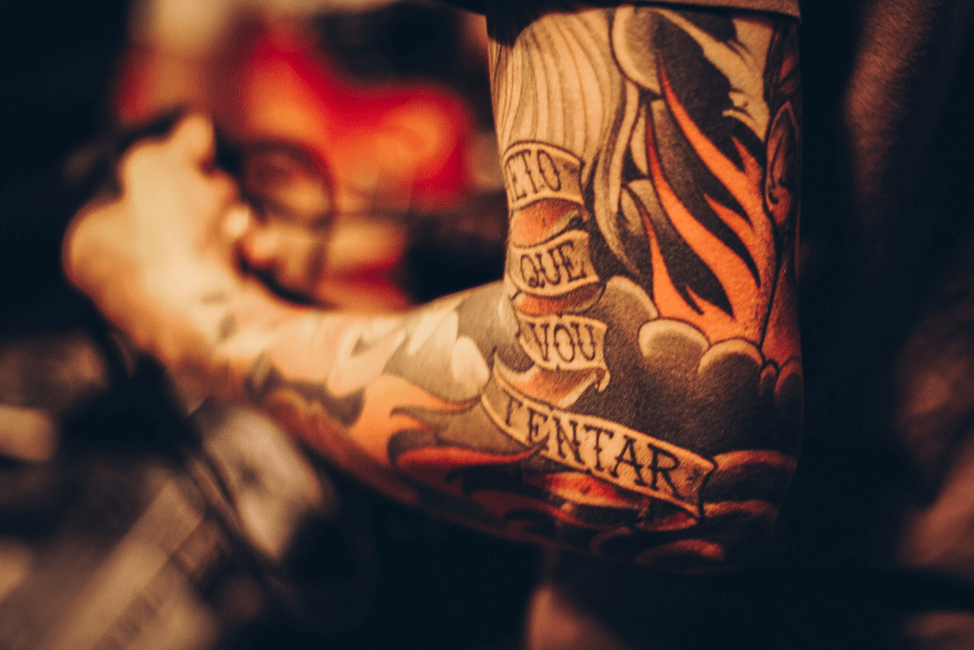
A man with a full sleeve tattoo (Photo by Matheus Ferrero)
Unfortunately, we can’t pinpoint when the first ever tattoo was done on human skin. But the well-preserved body of a tattooed man was discovered in the Otztal Alps in 1991 (he was buried in a glacier which only recently started to melt).
The man didn’t die last decade; he didn’t even die in the last century. Otzi the Iceman, as scientists call him, is said to have lived between 3400 and 3100 BC, which makes him at least 5,200 years old!
Now, what’s really interesting about his 61 tattoos is that the placement and distribution suggested the markings were therapeutic in nature. They were not a form of artistic expression or marker of his status in society.
Apparently, each tattoo mark revealed bone degeneration over that particular spot, which, according to the Smithsonian, implies that the tattoos were applied to alleviate joint pain.
Here’s a photo of Otzi the Iceman:
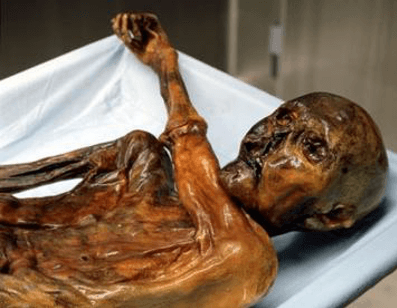
A photo of Otzi the Iceman. (Source)
Otzi may have been really old, but the ancient Egyptians are not to be outdone. According to this National Geographic article, a previously discovered 5,000-year old mummy recently underwent infrared imaging. And they were in for a surprise! The dark smudge on the mummy’s arm turned out to be a tattoo of a bull and barbary sheep!
A second female mummy from around the same time and region was also discovered to have figurative, abstract tattoo on her skin. This discovery pushes back the oldest known tattoo on human skin by at least 1,000 years, which makes it significantly older than Otzi the Iceman.
In addition to Otzi and the Egyptians, other ancient tribes and peoples have also been marking their bodies with ink and pigment for ages. These include ancient Greeks, Romans, Celtics, Chinese, and Indians. Even tribes from far-flung islands like Samoa and the Philippines have a colourful history of tattooing!
How did people tattoo in ancient times?
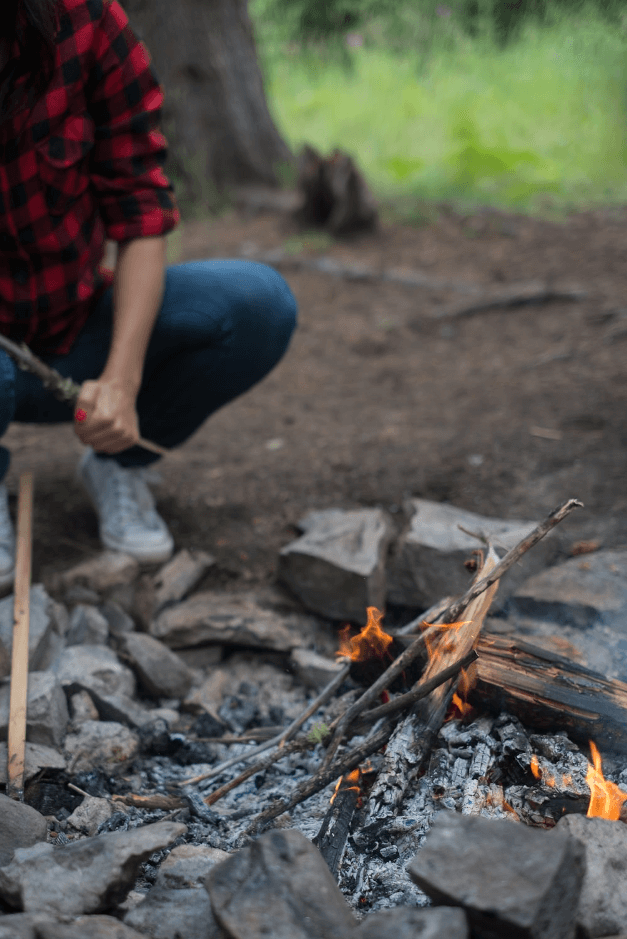
Our ancestors used ash and soot for tattooing. (Photo by Jenelle Hayes)
Modern tattoo machines and ink didn’t come into existence until the 19th century. Before that, people were rubbing fireplace soot or ash into open wounds (a stick and poke method, if you will). If you think that sounds painful, you can bet your favourite pet it was!
I can just imagine the horrors of getting a tattoo in ancient times. They probably didn’t get tattooed under the most sanitary of conditions, so the risk of getting an infection was very high.
Let me breakdown the process for you, just so you can understand – in fine detail – what it was like to get tattooed thousands of years ago:
- You get your skin cut by a thorn, stick, bone, metal, or some other pointy thing.
- Then you pack ash or soot or charcoal (or quite literally some dirt) into the wound.
- As the skin heals, it traps the dirt particles inside, thus making your skin appear discoloured.
Later on, as people started becoming more adept at tattooing, they started tying together a bunch of pointed needle-like objects to create various patterns.
No, green soap and cling film and sanitary practices didn’t exist back then, so this entire process was painful. And depending on the person’s pain tolerance, one small tattoo probably took take several hours to finish!
Aren’t we lucky we were born in these modern times? Samuel O’Reilly’s electric tattoo machine has been a game-changer. The whole tattooing process can now be done in minutes instead of hours.
Nowadays, there are all sorts of aftercare products to choose from to ensure optimal healing rates. I bet our inked ancestors would have loved to have been born in this century!
History of tattoos in ancient cultures
People tattoo themselves for various reasons. In some cultures, tattooing was done to denote social status. While in others, it was a mark of punishment. Here’s what tattoos meant to ancient cultures around the globe:
Ancient Britain
According to this BBC article, the name ‘Britain’ was derived from the Celtic word ‘Pretani’ which means the painted or tattooed ones. This name was given to them by the ancient Romans who invaded the island in 55 BC, and discovered them to be covered in body art. Apparently, it was common for Britons to dye or tattoo themselves with woad, which turned them into scary-looking blue warriors!
Ancient Greece and Rome
Some ancient Greeks and Romans practised decorative tattooing, but it wasn’t really all that popular. This is because tattooing was commonly used to mark criminals and prisoners of wars, and of course, their lowly slaves. Later on, soldiers and arms manufacturers were tattooed by the Romans; this continued well into the 9th century.
Ancient Egypt
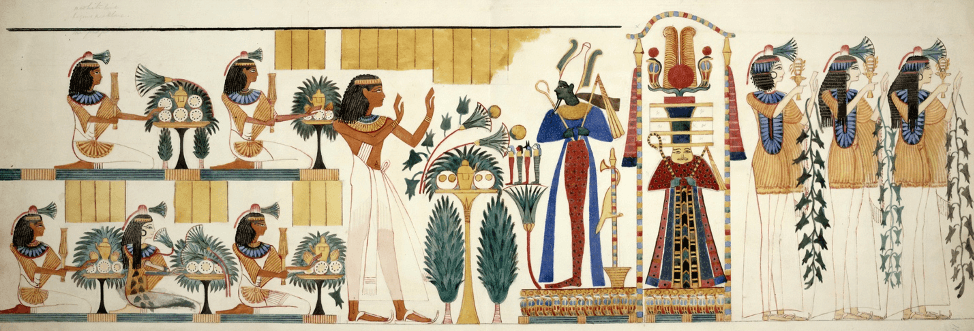
Ancient Egyptians loved their tattoos! (Photo by British Library)
Tattooing has been a common practice in Egypt since ancient times. Imagine that, two 5,000-year old mummies both discovered to have tattoos! But apart from these two mummies, it’s also important to mention other tattooed Egyptian women like Amunet (a priestess of Hathor). She and others like her apparently got tattoos for medicinal reasons, such as possibly treating a pelvic condition.
Samoa
The Samoan tradition of ‘tatau’ (this is widely viewed as the root word for the modern term ‘tattoo’) has been around for more than 2,000 years. Even with the advent of modern tattoo equipment, Samoan tattooists prefer to follow the ways of their ancestors. That means more pain and longer tattooing sessions, but in the Samoan community, this is viewed as bravery and endurance. Backing down from the pain is a big no-no, and such cowardice will be the cause of shame for the entire family.
China
China’s contribution to art is indisputable. However, when it comes to tattooing, not so much. This is because tattooing is traditionally shunned by the Chinese, and is usually reserved as punishment for criminals and bandits alike. But bandit or not, several tattooed Tarim mummies dating back to 2100 and 5500 BC were discovered in multiple cemeteries in present-day Xinjiang province. This goes to show that even in an ancient culture which looked at tattooed people as barbarians, this art refused to die and instead continued to thrive.
Japan
‘Irezumi’ means ‘tattoo’ in Japan. This art has been around for millennia as evidenced by clay figurines (called ‘dogu’) from the Jomon period (10,000 BC to 300 BC) showing tattoo-like markings. But the first written depiction came from the third century Chinese history text called Gishiwajinden that said Japanese men tattooed their faces and bodies. Over the next several centuries, the popularity and symbolism of tattooing will alternate between being accepted and shunned by society.
India

An ethnic Indian woman with tattoos on her face. (Source)
Different regions in India practised tattooing for different reasons. Tattooing is known as ‘godna’ in Hindi, which literally translates to burying the needle. For some communities, it was to flaunt them as permanent jewellery – something no one can ever take away from them. In some tribes, they’d tattoo their girls to make them look unappealing to men from rival tribes. Tattoos also helped establish tribal identities, especially in interior regions in India.
A brief history of the modern tattoo machine
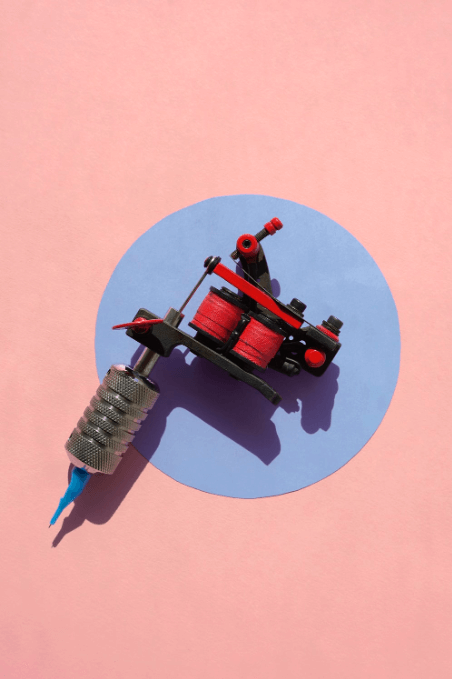
A modern tattoo machine (Photo by Andrej Lišakov)
This history of tattoo article won’t be complete without an introduction to the tattoo machine. Without this machine, tattooing might not have become as widespread and as popular as it is today. It is efficient for both tattooist (in terms of time spent tattooing) and customer (time spent closing your eyes in pain).
Now, the predecessor to the modern tattoo machine is actually Thomas Edison’s electric pen. It was slightly modified by Samuel O’Reilly to provide an ink reservoir and insert pigment to the skin (dermis layer). This is the rotary tattoo machine which is still widely used up to now.
However, the most popular machine is the coil tattoo machine. It was first developed by Thomas Riley just a few weeks after O’Reilly came up with his machine! It’s ideal for lining and shading work which is perfect for large and complex tattoos.
Here’s a short video explaining how these two modern tattoo machines work:
The tattoos of today: why it’s become so popular
Surveys and news reports confirm it – tattoos have gone mainstream in today’s society. Obviously, trends come and go. But for now, tattoos are making a serious comeback. It’s become so popular that a recent survey says that a fifth of British adults have tattoos (that’s 1 in 5 adults!).
In the US, tattoos are even more popular with 47% of millennials having gotten at least one tattoo. And the thing is, this trend doesn’t look like it’s going to slow down anytime soon.
The media and social media’s probably to thank (or blame) for this phenomenon. Everywhere you look, you see celebrities and athletes sporting their colourful and oh so beautiful tattoos.
When you go out in public, observe how many regular people you see out in the streets wearing a tattoo. You’ll likely see lots of visible tattoos – imagine how many more are hidden under clothing!
The stigma associated with tattoos are probably a thing of the past. Here in the UK, even older citizens are getting inked! Gone are the days when other people will look down on those who have tattoos – visible or not.
If you show your tattoo in public, you no longer need to worry about being stereotyped as a lowly criminal. In fact, the opposite is now true – you’ll be perceived as someone cool, fashionable and modern!
Concluding the history of tattoos…
Tattoos really have come a long way, and the entire process can only become easier and safer in the future. That said, there’s a corresponding rise in the number of tattoo removal procedures, but that’s a topic for another day. Fortunately for us, we live in a time where tattoo removal is now possible. Our ancestors lived and died with their tattoos – whether they liked it or not!
